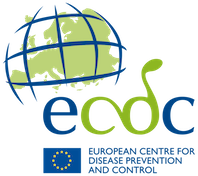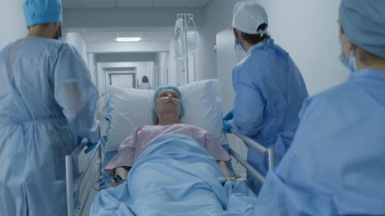Factsheet about poliomyelitis
Poliomyelitis, also known as polio, is a vaccine-preventable systemic viral infection affecting the motor neurons of the central nervous system (CNS). Historically, it has been a major cause of mortality, acute paralysis and lifelong disabilities, but large-scale immunisation programmes have eliminated polio from most areas of the world. The disease is now confined to a few endemic areas and attempts are being made to globally eradicate the wild poliovirus. The last wild polivirus infection in Europe was in 1998 and the World Health Organization (WHO) declared the European Region polio-free (free of wild poliovirus) in June 2002. On 5 May 2014, WHO declared the international spread of wild poliovirus in 2014 a Public Health Emergency of International Concern (PHEIC) following the confirmed circulation of wild poliovirus in several countries and the documented exportation of wild poliovirus to other countries. Since then the international spread of polio remained a PHEIC.
The pathogen
- Polioviruses are small single-stranded RNA viruses that belong to the Enterovirus subgroup of the family Picornaviridae.
- There are three distinct serotypes of wild poliovirus (WPV), types 1, 2 and 3, and infection or immunisation with one serotype does not induce immunity against the other two serotypes.
- WPV1 has historically been the predominant cause of polio worldwide and continues to be transmitted in endemic areas. Transmission of both WPV2 and WPV3 have been successfully interrupted globally and cases were last reported in 1999 and 2012, respectively.
- Oral polio vaccine (OPV) is produced from live attenuated WPV. On very rare occasions, if a population is seriously under-immunised, the virus can transform into pathogenic strains, known as vaccine derived poliovirus (VDPV), and circulate in the community. These viruses are called circulating vaccine-derived polioviruses (cVDPV).
Clinical features and sequelae
- Most infected people (about 70%) do not develop symptoms and about 25% of infected individuals develop mild clinical symptoms including fever, headache and sore throat.
- If the virus invades the nervous system, it can cause acute flaccid paralysis (AFP) within hours. Fewer than 1% of infections lead to irreversible paralysis (one case in 200 infections with poliovirus type 1 and one case in more than 1 000 infections with poliovirus type 2 or 3, respectively).
- Paralytic polio occurs in less than 1% of all infections. It is classified into spinal, bulbar and bulbospinal types, depending on the site of the affected motor neurons.
- Spinal polio starts with symptoms of meningitis, followed by severe myalgia and localised sensory (hyperaesthesia, paraesthesia) and motor (spasms, fasciculations) symptoms. After one to two days, weakness and paralysis set in. The weakness is classically an asymmetrical, flaccid paralysis that peaks at 48 hours after onset. This is classified as an AFP. Proximal muscle groups are affected more than distal groups. Any combination of limbs may be paralysed, although lower limbs are predominantly affected.
- Bulbar polio is a serious form of the disease resulting from paralysis of the muscles innervated by the cranial nerves, and this can lead to dysphagia, nasal speech, pooling of secretions and dyspnoea.
- In rare instances polio can present as encephalitis, clinically indistinguishable from other causes of viral encephalitis.
- The paralysis can progress for up to one week. Permanent weakness is observed in two-thirds of patients with paralytic polio. After 30 days, most of the reversible damage will have disappeared, and some return of function can still be expected for up to nine months.
- Post-polio syndrome is a poorly understood condition, characterised by the onset of fatigue, muscle weakness and wasting in patients who have recovered from paralytic polio. It can start several years after the acute disease. Post-polio syndrome is not an infectious disease and further discussion of the condition is beyond the scope of this factsheet. Current European consensus guidelines on diagnosis and management of post-polio syndrome are available from the European Federation of Neurological Societies.
- The mortality rate for paralytic polio ranges from 2-5% in children and up to 15-30% in adolescents and adults during outbreaks.
- cVDPV acts with the same characteristics of WPV, including the proportion of infections leading to paralysis.
Epidemiology
- In the pre-vaccine era, virtually all children were infected with poliovirus early in life.
- Immunisation with oral polio vaccines (OPV) and inactivated polio vaccines (IPV) started towards the end of the 1950s and has significantly reduced the incidence of polio.
- Since the Global Polio Eradication Initiative (GPEI) was launched in 1988 to eradicate all polioviruses, the global incidence has decreased by over 99% from an estimated 350 000 in 1988 in more than 125 endemic countries to 99 cases of WPV reported in two countries in 2024.
- Of the three wild poliovirus serotypes only WPV1 remains. WPV2 was declared eradicated in September 2015, with the last case detected in India in 1999. WPV3 was last detected in November 2012 in Nigeria and was declared eradicated in October 2019.
- In 1994, the WHO Region of the Americas was certified polio-free, followed by the WHO Western Pacific Region in 2000, the WHO European Region in 2002 and the WHO South-East Asia Region in 2014. In August 2020, the WHO African Region was declared free of wild poliovirus after four years with no new cases reported.
- Outbreaks of cVDPV are rare and occur due to under-immunised populations.
- Data on polio surveillance and disease incidence are reported in ECDC’s Annual Epidemiological Report on Communicable Diseases in Europe.
- An interactive map showing worldwide polioviruses cases, regularly updated by ECDC, is available. More information can be found on the GPEI website.
- See also the EU case definition of paralytic poliomyelitis, for the purposes of reporting communicable diseases to the community network.
Transmission
- Humans are the only known reservoir for poliovirus.
- Poliovirus can be excreted by nasopharyngeal secretions for about one week and in stool for three to six weeks after infection, even from people who do not develop symptoms. Maximum excretion of the virus is seen in two to three days prior and one week after appearance of symptoms.
- Poliovirus transmission occurs from person-to-person by oral contact with secretions (oro-oral) or faecal material (faecal-oral) from an infected person. Faecal-oral transmission is more common in areas with poor access to water and sanitation.
- The incubation period for paralytic cases is approximately 7−14 days (range 3–35 days).
- In rare cases immunodeficient patients can become asymptomatic chronic carriers of WPV and VDPV.
- Poliovirus can survive at room temperature for a few weeks. Soil, sewage and infected water have been shown to harbour the virus.
- All unimmunised persons are susceptible to the infection. Infants in the first six months may have some protection from passively transferred maternal immunity. Children under five years are at highest risk of contracting the infection.
- Poliovirus is highly infectious, with sero-conversion rates of 90–100% among household contacts.
- The following factors have been identified as contributing to continued polio transmission: high population density; poor health service infrastructure; poor sanitation; high incidence of diarrhoeal diseases; and low oral polio vaccine coverage.
Prevention
- Immunisation is the only effective method of providing protection against severe disease caused by polio.
- There are two types of polio vaccine: OPV and IPV, which are usually administered alongside other antigens as part of combined vaccines. Since the global ‘switch’ in 2016 to replace the trivalent OPV (tOPV) with bivalent OPV (bOPV) containing only poliovirus types 1 and 3, vaccination with bOPV does not protect against paralytic disease caused by poliovirus type 2.
- While OPV is more effective in inducing intestinal antibody production and hence more effective in interrupting virus transmission, IPV has the advantage of having no risk of causing vaccine associated paralytic polio (VAPP) or the development of virulent VDPV. IPV induces limited intestinal mucosal immunity in previously unvaccinated individuals, however, IPV can reduce the quantity and duration of virus shedding in faeces when provided to individuals already exposed to WPV or OPV, which may contribute to a reduction in transmission. It has been suggested that IPV may have a greater impact on oropharyngeal shedding and that IPV has a bigger impact on stopping transmission in areas with better sanitation although there is limited evidence to support this.
- VDPV are genetically mutated OPV strains that have lost key attenuating mutations. On rare occasions, and only in under-immunised populations, VDPV develop through a series of mutations and acquisition of genetic materials from other enteroviruses, a process that is estimated to take on average at least one year. The critical risk factor for VDPV development is the duration for which the vaccine virus circulates in a population. Average circulation time for OPV virus increases with lower vaccination coverage in the population, hence increasing the risk that VDPV strains will emerge. cVDPV are strains that have taken on the neurovirulence and transmissibility of WPV and are associated with person-to-person transmission. Polio disease caused by cVDPV presents with the same symptoms as polio caused by WPV and the same rate of infections leading to paralytic polio. A fully immunised population is protected against both vaccine-derived and wild polioviruses. cVDPV outbreaks have the ability to cause endemic polio disease, can be spread in any under-vaccinated community, and can be imported to other countries. Some of the factors favouring cVDPV emergence and spread are the same as for WPV circulation: low polio vaccine coverage rates or poorly conducted supplementary immunisation activities in areas where OPV use continues. Outbreaks occur when the density of non-immune people rises to the point where the chains of cVDPV transmission can propagate. The size of a cVDPV outbreak is a function of the size of the non-immune population and the potential for the outbreak virus to transport to susceptible communities elsewhere. Countries that were (or are) major reservoirs for WPV circulation, and where the potential for person-to-person poliovirus transmission is greatest, are at particularly high risk of cVDPV emergence, and maintenance of high rates of polio vaccine coverage in these settings is essential.
- In recent decades, European countries have gradually shifted from OPV to IPV and today all EU/EEA Member States use IPV in their childhood immunisation programmes. The vaccine is applied as a combination vaccine, together with other vaccines. The number and timing of the doses in the primary series differs among EU/EEA Member States and the recommendations for individual countries can be reviewed in the ECDC’s Vaccine Scheduler.
- AFP surveillance is considered the gold standard for detecting polio cases and essential for global polio eradication. It can work well in areas with limited resources and a high level of polio; however, since the poliovirus only causes clinical illness in approximately 1/100–1/1 000 people infected, AFP surveillance is a blunt surveillance tool because the virus may have been transmitting quite widely in a community before clinical cases are detected. AFP surveillance includes case finding, sample collection, laboratory analysis and mapping of the virus to determine the origin of the virus strain. To ensure sensitivity of surveillance, at least one case of non-polio AFP should be detected annually per 100 000 population aged below 15 years. In endemic regions, to ensure even higher sensitivity, this rate should be two per 100 000. AFP surveillance data are reported to the WHO on a weekly basis.
- Polioviruses are part of the Enterovirus genus. Enteroviruses cause a wide range of illnesses, including respiratory and gastrointestinal symptoms and aseptic meningitis. Many clinical laboratories may only have the ability to identify enteroviruses as a ‘generic’ group and lack the ability to differentiate between types of enterovirus (polioviruses, echoviruses, Coxsackie viruses, etc.). The goal of enterovirus surveillance is to determine if any of the circulating enteroviruses are actually polioviruses. Clinical enterovirus surveillance can complement or replace AFP surveillance in polio-free countries, especially when the AFP surveillance cannot meet the criteria for minimum detection of AFP cases.
- Environmental surveillance (detecting poliovirus in sewage water) may be a more sensitive tool to detect the transmission of poliovirus before clinical cases occur and when there may still be time to intervene to prevent disease. Environmental surveillance plays an increasingly important role for the Global Polio Eradication Initiative (GPEI) in its efforts to achieve and maintain a polio-free world. Through the examination of composite human faecal samples from untreated wastewater collection systems typically located downstream from high-risk populations, environmental surveillance provides valuable information on the presence or absence of poliovirus circulation in defined geographical areas. Though it cannot link poliovirus directly with infected individuals, it enhances the sensitivity of surveillance for AFP and can provide an early warning indicator on potentially multiple silent polio infections during an outbreak or in an endemic area. Therefore, to maintain poliovirus surveillance at the high sensitivity and specificity levels required to achieve and certify eradication, countries can rely on a combination of environmental and AFP surveillance.
- The European Regional Commission for Certification of Poliomyelitis Eradication (RCC) requests an annual progress report (AFP, environmental surveillance microbiological data, routine immunisation coverage, presence of high-risk groups or pockets of susceptible individuals and existence of a preparedness plan) from each Member State of the WHO European Region. It also reports on the status of global polio eradication, efforts to sustain polio-free status in the European Region and the conclusions of risk assessments and required risk mitigation measures. The RCC advised countries on strengthening all types of surveillance including AFP surveillance, environmental surveillance and enterovirus surveillance.
- Provision of clean water, improved hygienic practices and sanitation are important for reducing the risk of transmission in endemic countries.
Management and treatment
- All cases of AFP should be investigated for polio.
- There is no specific treatment available for acute polio and cases are managed supportively and symptomatically.
- Even a single case of polio is considered an outbreak and requires urgent action. Under the International Health Regulations 2005 (IHR) any detection of poliovirus, whether WPV, VDPV (type 1, 2, or 3), or Sabin* type 2 virus more than four months after use of monovalent oral type 2 polio vaccine (mOPV2), must be assessed within 48 hours and then notified to WHO within 24 hours. The standard operating procedures (‘Responding to a poliovirus outbreak’) are provided by the Polio Global Eradication Initiative.
Note: The information contained in this fact sheet is intended as general information and should not be used as a substitute for the individual expertise of healthcare professionals.
*The so-called Sabin type 2 virus is the type 2 live-attenuated vaccine strain of poliovirus.




